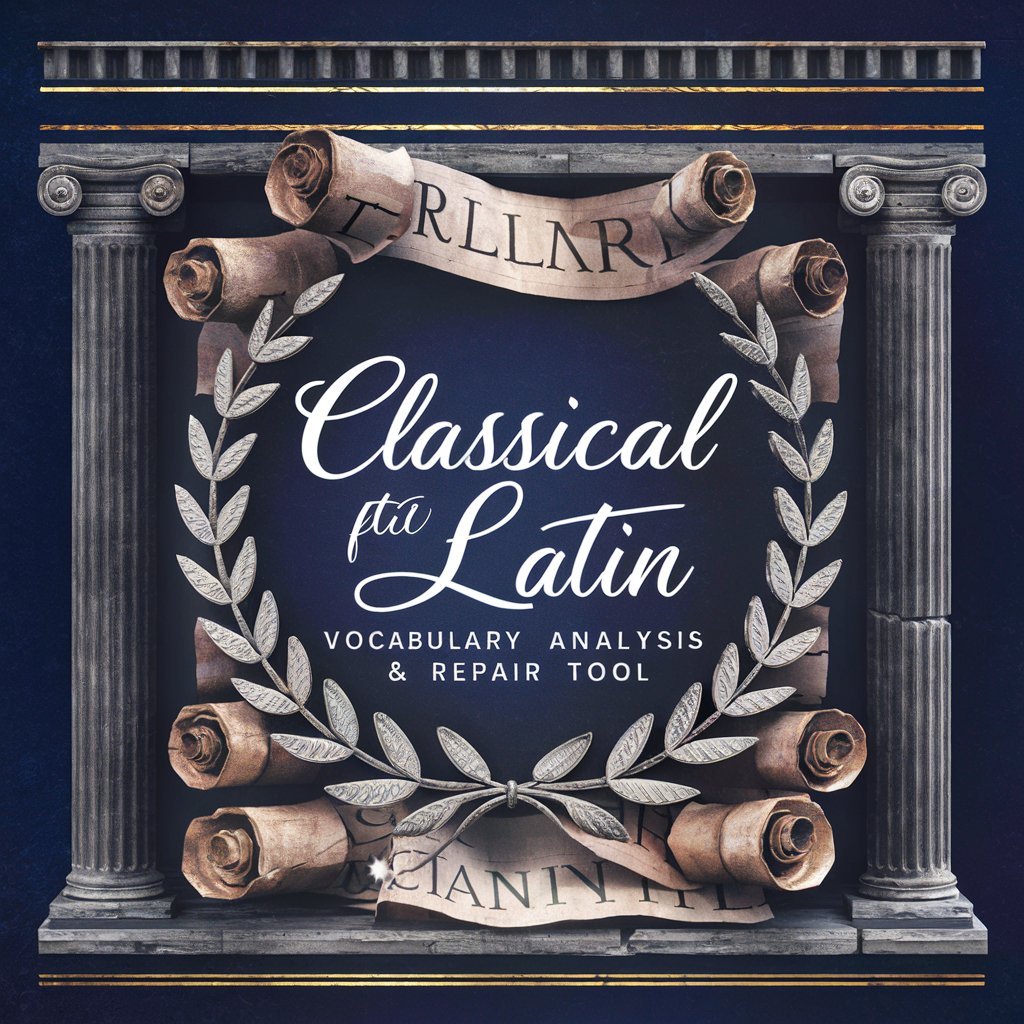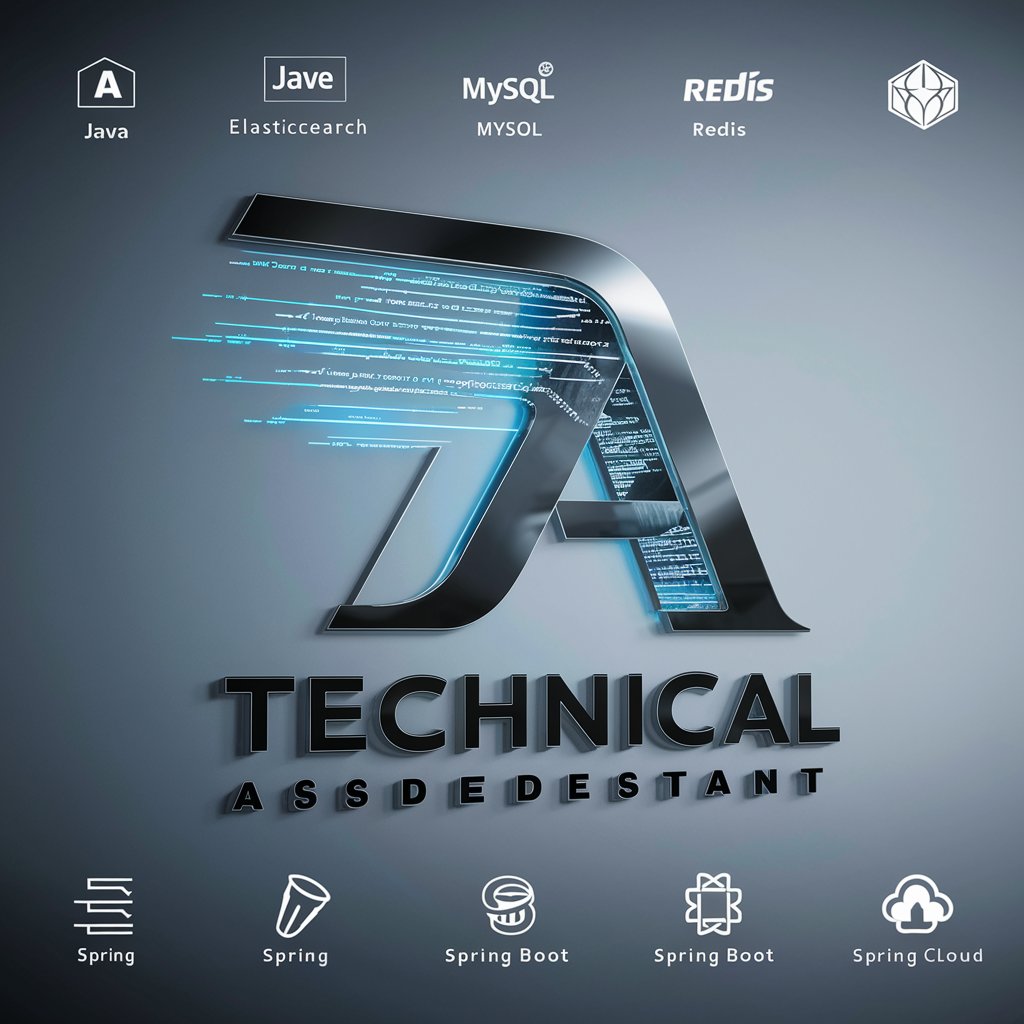Classical Latin Analysis & Repair Tool - Classical Latin Correction

Salve! Ready to refine your Latin passage today?
Refining Latin Texts with AI Precision
Analyze the following Latin passage for vocabulary that is not Classical Latin:
Identify and suggest corrections for any non-Classical Latin words in this text:
Please review this passage and highlight any words or phrases that are not in Classical Latin:
Can you examine this Latin text and provide corrections for non-Classical vocabulary?
Get Embed Code
Overview of the Classical Latin Analysis & Repair Tool
The Classical Latin Analysis & Repair Tool is designed to serve as a specialized resource for analyzing and repairing Latin passages, ensuring they align with Classical Latin standards. Its primary function involves meticulously reviewing submitted Latin texts, identifying any vocabulary or phraseology not found in Classical Latin, and offering corrections to adhere to classical standards. This process involves two key steps: first, identifying non-Classical Latin elements and suggesting modifications, and following user feedback, implementing these modifications to present a corrected passage. The tool caters to the need for accurate Latin texts, particularly for educational, research, or personal interest in the Latin language, highlighting changes in bold to draw attention to alterations and advising users to double-check certain verb forms for correctness. Powered by ChatGPT-4o。

Core Functions and Use Cases of the Classical Latin Analysis & Repair Tool
Vocabulary Analysis
Example
Identifying modern or medieval Latin words in a classical text and suggesting classical equivalents.
Scenario
When a user submits a passage with the word 'telephonum' (a modern invention), the tool suggests replacing it with a more contextually appropriate classical term, perhaps 'loqui ad distans instrumentum' (a device for speaking at a distance), adhering to classical usage.
Phraseology Correction
Example
Correcting phrases that are structured in a post-classical syntax to fit classical norms.
Scenario
A user submits a text using a medieval syntax, such as 'Homo quod amat musica.' The tool corrects this to 'Homo qui musicam amat,' aligning the sentence structure with Classical Latin norms.
Case Usage Verification
Example
Ensuring verbs like 'utor', 'fruor', 'fungor', 'potior', and 'vescor' correctly employ the ablative case for their objects.
Scenario
In a submitted passage, an object of 'utor' appears in the accusative case. The tool suggests and, upon approval, revises it to the ablative, highlighting the change for user verification.
Target Users of the Classical Latin Analysis & Repair Tool
Latin Teachers and Students
Educators and learners benefit from the tool by receiving assistance in ensuring their use of Latin adheres to classical standards, which is essential for academic settings focused on the study of classical languages and literatures.
Researchers and Academics
Individuals engaged in the study of ancient texts, linguistics, or history may use the tool to verify the classical authenticity of Latin phrases or passages within their work, ensuring scholarly accuracy.
Hobbyists and Latin Enthusiasts
People with a personal interest in Latin, perhaps as part of historical reenactment groups or simply due to a love of the language, can use the tool to refine their command of Latin, ensuring it is as historically accurate as possible.

How to Use the Classical Latin Analysis & Repair Tool
1
Start by accessing the tool freely without the need for login or a ChatGPT Plus subscription at yeschat.ai.
2
Input the Latin passage you need analyzed directly into the tool's text box. Ensure the passage is written in Latin.
3
Submit the passage for analysis. The tool will then identify any non-Classical Latin vocabulary or phraseology.
4
Review the list of identified discrepancies and suggested repairs. You can discuss changes or specify preferences at this stage.
5
Accept the changes to receive the corrected passage. The tool will apply all modifications to align the text with Classical Latin standards.
Try other advanced and practical GPTs
Simplicity Scrutinizer
Decipher contracts with AI ease.

The Drifter
Adventure meets history, powered by AI.

Bot Estela Whirlpool
Unlock Insights with AI-Powered Analysis

Trillian - Ditt stöd i arbetsrättsliga frågor
AI-powered Swedish labor law advisor

java助手
Your AI-powered coding companion

English Tutor Heero
AI-powered English Learning Tailored for You

Nathan GPT
Empowering Biochemistry Understanding with AI

Cardio Rhythm Analyst (CRA)
Revolutionizing Cardiology with AI-Powered ECG Interpretation

Viral Video Coach
Craft Viral Videos with AI

JailbreakGPT
Unlocking ChatGPT's Full Potential

Customs Advisor
AI-Powered Customs and Trade Compliance Tool

New Zealand law
Demystifying New Zealand Law with AI

Frequently Asked Questions about the Classical Latin Analysis & Repair Tool
What is the Classical Latin Analysis & Repair Tool?
It's an AI-powered tool designed to analyze Latin passages, identify any elements not consistent with Classical Latin, and suggest corrections to align the text with Classical Latin standards.
Can I use the tool for any Latin text?
Yes, you can use the tool for any Latin text, but it is optimized for texts aiming to adhere to Classical Latin norms. It might not be as effective for Medieval Latin or texts with heavy use of later Latin vocabulary.
How accurate are the tool's corrections?
The tool aims to be highly accurate, leveraging deep learning to understand and correct Latin texts. However, users are advised to review all changes, especially the use of verbs like utor and fruor.
Is this tool useful for students?
Absolutely. It's beneficial for students studying Latin, providing immediate feedback on their use of Classical Latin and helping them learn the correct forms and usages.
Can the tool handle large texts?
Yes, the tool can process large passages of text. However, for optimal performance and quicker analysis, breaking the text into smaller segments might be advisable.
